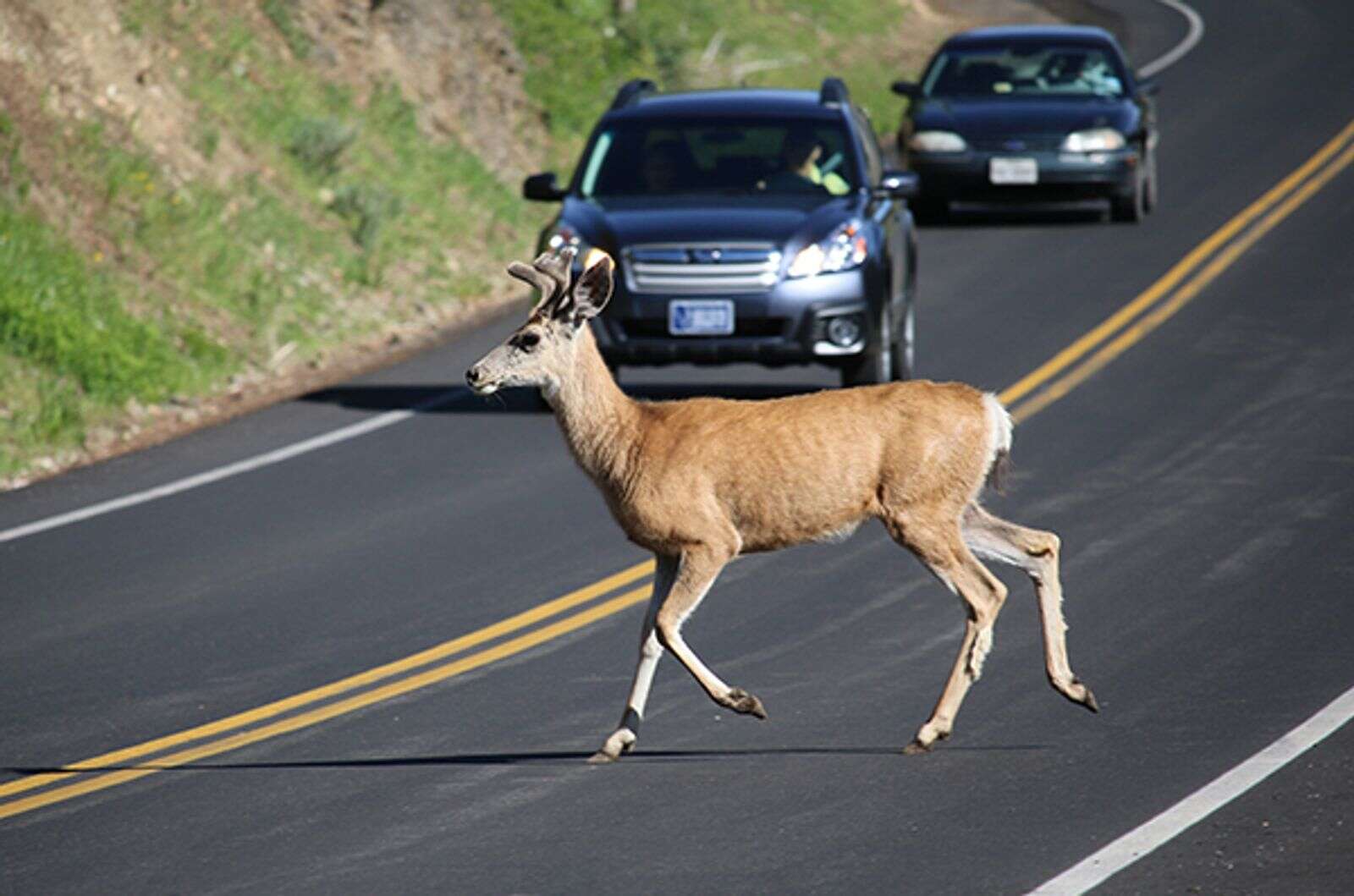ODOT documents an average of 6,000 vehicle collisions with deer and elk each year, with most happening in October and November. [Photo by Roblyn Brown]
Oregon is in the midst of yet another bumper crop of wildlife-related vehicle accidents that make late October through November the worst period for hitting deer, elk and other animals on area roads.
Fall migration of black-tailed deer and sex-crazed bucks chasing does during the height of their mating season conspire to create the statistically highest chances motorists have for hitting a deer.
And some roads are far worse than others, state studies show.
Oregon Department of Transportation has tracked wildlife-vehicle collisions over the past five years, and it says Highway 238 and Highway 62 north of Shady Cove are the worst places in Jackson County for wildlife collisions.
Based on ODOT dispatch reports, Highway 238 from east of Ruch to the town of Applegate logged between 16 and 25 wildlife-vehicle collisions per mile of roadway between from 2017 through 2021.
It’s even worse along Highway 62 north of Shady Cove, where animal-vehicle crashes ranged from as low as 16 per mile to as high as 40 per mile during that five-year time frame, ODOT statistics show.
That doesn’t surprise Dylan Edwards, a habitat biologist with Oregon Department of Fish and Wildlife.
The Highway 62 area north of Shady Cove is smack dab in the middle of migration routes blacktails used to move from high-elevation summer range to lower elevations in fall, Edwards said.
And now’s the time to slow down there.
“The peak migration is generally the middle of October, but with the warm weather and rain coming very soon, I expect a lot of movement,” Edwards said.
It only gets worse in mid-November, when normally elusive blacktails enter the breeding period, called the “rut.” Suddenly, roadways they’ve eschewed for most of the year are now perceived as minor obstacles between bucks and does.
“The bucks are thinking with different brains and not paying attention,” Edwards said. “It seems like we get another slew of collisions then. It’s another reason to go the speed limit.”
But when it comes to wildlife collisions, not all forest roads are created equally here.
Comparatively, the Interstate 5 stretch from Medford to the California border logged one to five wildlife-related crashes per mile during the study period, ODOT reports.
The actual number of collisions is likely higher, as many are not reported if there is minimal damage or no human injuries, according to ODOT.
Regardless, be thankful you don’t live immediately around the cities of Klamath Falls, Bend, Enterprise and Lakeview, where some roads have mile-long stretches logging 41 to 76 vehicle collisions with wildlife during that five-year study span.
“A lot of those are rural routes,” ODOT spokesman Matt Noble said. “There are a lot more animals, and that seems to add up to more collisions.”
But ODOT and ODFW have been working to curb such collisions by adding wildlife underpasses through major rural highways, as well as clearing brush well away from roads to make migrating animals easier to spot.
Such work on Highway 97 near Sunriver has helped reduce vehicle-wildlife collisions by nearly 90%, ODOT reports.
Similar underpasses are eyed throughout western Oregon, including a stretch of I-5 near the Siskiyou Summit.
Of the nearly 31,000 reported wildlife-vehicle crashes in Oregon during the study period ending in December, nearly 93% involved deer — and most come now through November, records show.
A relatively new wrinkle in the wildlife-vehicle collision saga is the transfer of some of these accidents into a new meals-under-wheels program called the ODFW’s roadkill salvage rules.
Since 2019, drivers whose vehicles strike and kill animals on roadways can claim the animal and keep salvageable meat. Several rules apply, and salvagers must fill out a free online permit available at https://myodfw.com/articles/roadkill-salvage-permits.
Since the grille-to-grill program began in 2019, ODFW has issued 5,027 permits for legal salvage, the agency’s statistics show. The majority have been in western Oregon for black-tailed deer, records show.
There is no statistical evidence to suggest Oregonians are reporting more wildlife collisions now that they can keep roadkill if they choose, said Rachel Wheat, ODFW’s wildlife connectivity coordinator.
However, since the program began, ODOT road crews have reported picking up fewer dead deer along Oregon roadways, Wheat said.
“The assumption is that people are taking advantage of the salvage program,” Wheat said.
Reach reporter Mark Freeman at 541-776-4470, or email at mfreeman@mailtribune.com.
